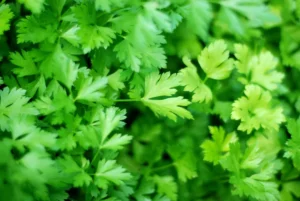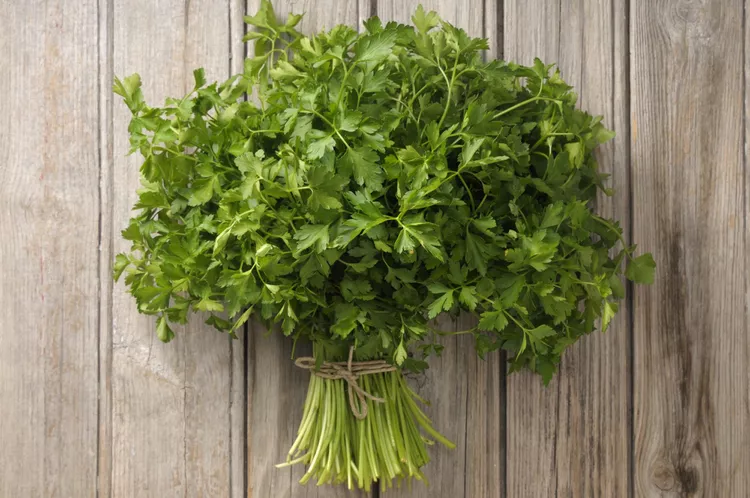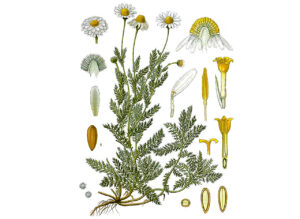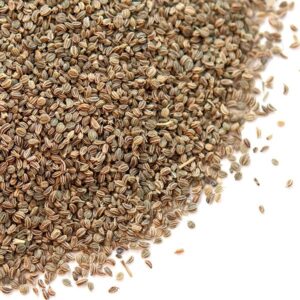Parsley: The Overlooked Culinary Gem
Parsley (Petroselinum crispum) is a vibrant green herb often undervalued in the kitchen. While it’s frequently seen as just a garnish or sprinkled over dishes for a pop of color, parsley is a flavorful and nutrient-rich addition to meals. It plays an essential role in many cuisines worldwide, offering both culinary and medicinal benefits.
What Is Parsley?

Parsley is a flowering plant in the Apiaceae family, native to the Mediterranean, including Northern Africa. It now grows globally, with three primary varieties:
- Curly Parsley (French): Often used as a garnish.
- Flat-Leaf Parsley (Italian): Preferred for cooking due to its robust flavor.
- Parsley Root: A distinct variety used as a root vegetable with a parsnip-like taste.
How to Harvest Parsley
Parsley thrives with regular trimming. Plant it in early spring, and it can often be harvested until late fall or early winter, depending on the climate. To harvest, use sharp scissors or garden shears, cutting stems close to the ground. For parsley root, wait until after the first frost but before the ground freezes to harvest for optimal flavor.
How to Store Parsley
To keep parsley fresh:
- After purchasing: Remove any rubber bands or ties.
- Rinse and dry: Wash thoroughly, spin dry, and wrap in paper towels.
- Storage options:
- Place wrapped parsley in an unsealed zip-top bag in the fridge.
- Store stems in a glass of water like a bouquet, covered lightly with a plastic bag.
- Chop and freeze for longer storage.
Nutritional Benefits
Parsley is rich in vitamins B1, B2, C, and K. Its essential oils contain compounds that may aid digestion, stimulate appetite, and provide mild laxative effects.
Uses and Misconceptions
Parsley is commonly used for its fresh taste in soups, salads, and sauces. Additionally, it is believed to support conditions like constipation, kidney stones, and dark skin patches (melasma), though scientific evidence is limited. Be cautious not to confuse parsley with fool’s parsley or parsley piert, as these are unrelated plants.




